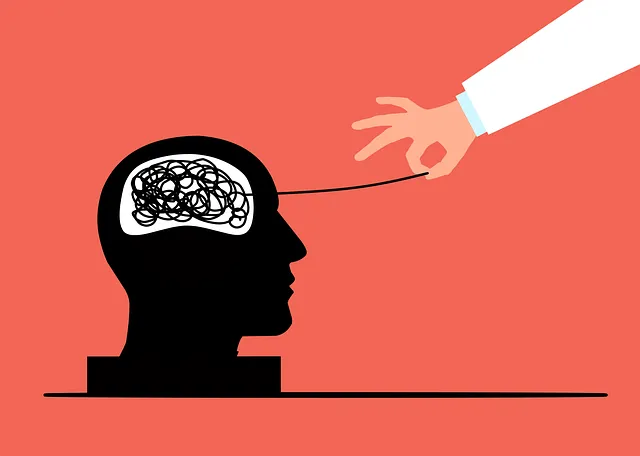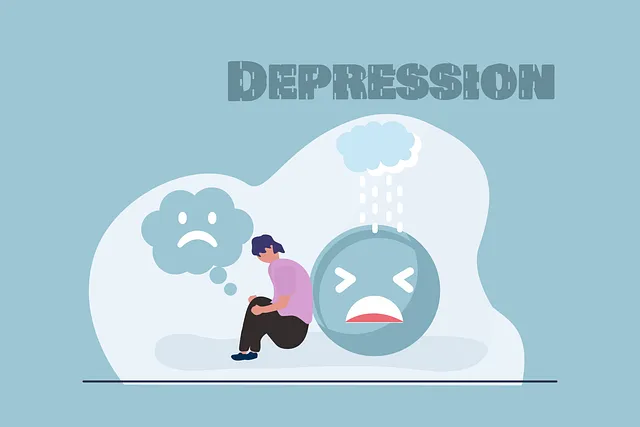The media's portrayal of mental illness deeply affects public perception and support for those seeking help. In Northglenn, while Kaiser offers mental health services, there's a gap in accessibility due to limited specialized professionals. Positive media depictions are crucial to reducing stigma and encouraging individuals to seek support without fear of judgment. By presenting diverse, accurate stories about mental wellness, media can foster empathy and normalize conversations around mental health. Collaboration between media outlets, healthcare providers like Kaiser, and communities is essential to challenging stereotypes, enhancing risk assessment, advocating for better policies, and promoting accessible resources for Northglenn residents.
In today’s media landscape, the portrayal of mental illness can significantly shape public perceptions and access to care. This article explores the impact of media representation on mental health, using a case study of Northglenn and Kaiser, examining their respective mental health service offerings. We delve into the current state of mental illness depiction in popular media and present effective strategies for promoting accurate representations. Furthermore, we emphasize the need for collaboration between media, healthcare providers, and communities to foster positive change.
- Understanding the Impact of Media Portrayal on Mental Health Perception
- Kaiser and Northglenn: A Case Study on Access to Mental Health Services
- The Current State of Mental Illness Representation in Popular Media
- Effective Strategies for Promoting Accurate Mental Health Depictions
- Fostering Change: Collaboration Between Media, Healthcare Providers, and Communities
Understanding the Impact of Media Portrayal on Mental Health Perception

The media plays a powerful role in shaping public perception about mental health, significantly influencing how individuals understand and respond to various conditions. Portrayals of mental illness in movies, television shows, and news outlets can either perpetuate harmful stereotypes or offer insightful representations that foster empathy and understanding. For instance, Northglenn residents with Kaiser’s mental health services might benefit from these media influences, as accurate depictions could encourage them to seek support without stigma.
When media portrays mental illness positively, it contributes to increased self-awareness and encourages open conversations about mental wellness. This can lead to better access to resources like Mental Wellness Coaching Programs Development and Self-Awareness Exercises, ultimately aiding in Anxiety Relief for those struggling. Conversely, negative or inaccurate representations may reinforce societal biases, making individuals with mental health issues feel further isolated and misunderstood.
Kaiser and Northglenn: A Case Study on Access to Mental Health Services

In the case of Northglenn and Kaiser, examining access to mental health services reveals a critical gap that many communities face. While Kaiser, as a prominent healthcare provider, offers a range of medical services, its availability for mental health support varies significantly across different locations. Northglenn, a suburban area, often struggles to attract specialized mental health professionals, leaving residents with limited options for treatment and support. This disparity underscores the need for robust mental health policies and initiatives that ensure equitable access to care.
The challenge of providing adequate mental health services in Northglenn highlights the importance of self-care routine development as a supplementary strategy. Encouraging residents to prioritize mental wellness through personalized routines can help bridge the gap until more comprehensive resources are accessible. Additionally, mental wellness coaching programs could be implemented to empower individuals with coping mechanisms and resilience, fostering a sense of agency within the community. Further, advocacy for robust mental health policy analysis is crucial to identify systemic barriers and advocate for innovative solutions that address these disparities in care.
The Current State of Mental Illness Representation in Popular Media

In today’s digital era, popular media plays a significant role in shaping societal perceptions about mental illness. However, the current state of representation often falls short, perpetuating stereotypes and misconceptions. Many productions still portray mental health conditions as solely dramatic or sensationalistic, failing to reflect the nuanced experiences of individuals living with these issues. This is particularly evident in Northglenn, where, despite Kaiser offering mental health services, the local media landscape lacks balanced narratives on mental wellness. The absence of realistic portrayals hampers public understanding and can discourage those in need from seeking help, such as availing themselves of Trauma Support Services or Crisis Intervention Guidance available through Kaiser.
The challenge lies in presenting mental illness not as a mere plot device but as a complex aspect of human experience. By showcasing diverse stories with accurate representations, media has the potential to foster empathy and reduce stigma. Incorporating narratives that highlight recovery journeys, coping mechanisms, and accessible resources like Depression Prevention initiatives can significantly impact public perception. Such positive portrayals are crucial in normalizing conversations around mental health and encouraging open dialogue, ultimately leading to better support systems for those affected.
Effective Strategies for Promoting Accurate Mental Health Depictions

Promoting accurate mental health depictions in media is a multifaceted challenge that requires a concerted effort from various stakeholders. One effective strategy involves integrating Compassion Cultivation Practices into storytelling, fostering empathy and nuanced understanding among audiences. By presenting characters with genuine struggles and positive recovery arcs, media can dispel stereotypes and reduce stigma associated with mental illness. Additionally, encouraging diverse representations of mental health conditions, including lesser-known disorders, ensures a more comprehensive and realistic portrayal.
Another crucial approach is to enhance Risk Assessment for Mental Health Professionals working in media production. This includes rigorous fact-checking, consulting with mental health experts, and ensuring that depicted treatments are evidence-based. Organizations like Kaiser, notably present in Northglenn, can play a vital role through partnerships and policy initiatives. Advocating for robust Mental Health Policy Analysis and Advocacy at both local and national levels is essential to creating an environment where media production aligns with best practices in mental health care.
Fostering Change: Collaboration Between Media, Healthcare Providers, and Communities

In the quest to challenge mental illness representation in media and foster positive change, a collaborative effort between media outlets, healthcare providers, and communities is paramount. Northglenn residents curious about Kaiser’s mental health services can find support from this tripartite partnership. By working together, these entities can ensure that narratives surrounding mental health are accurate, empathetic, and diverse. Media plays a crucial role in shaping public perception, while healthcare providers offer valuable insights into the latest research and treatment options. Communities, with their unique perspectives and experiences, add depth to these conversations.
This collaboration extends beyond addressing concerns like depression prevention and self-care routine development for better mental health. It also involves promoting emotional regulation strategies that can be integrated into daily life. By combining expertise and resources, these stakeholders can create a more nuanced understanding of mental illness, reduce stigma, and encourage individuals to seek help when needed. This collective effort is essential in shaping a landscape where mental health discussions are as vibrant and supportive as the communities they serve.
In conclusion, the representation of mental illness in media plays a pivotal role in shaping public perception and access to mental healthcare. As highlighted through the case study of Kaiser and Northglenn, disparities in service availability can be addressed by accurate media depictions that foster understanding and reduce stigma. By implementing effective strategies for promoting accurate mental health portrayals and fostering collaboration between media outlets, healthcare providers, and communities, we can strive towards a more inclusive and supportive society where everyone has access to the resources they need to manage their mental well-being, just as Northglenn residents benefit from Kaiser’s services.




